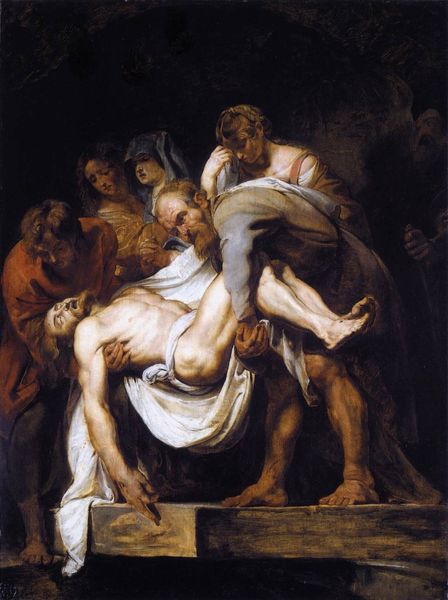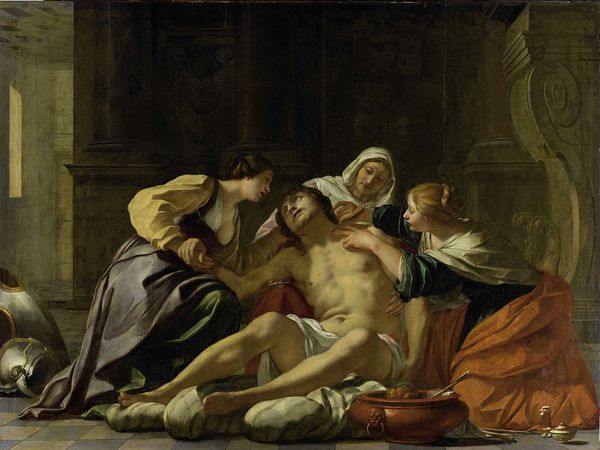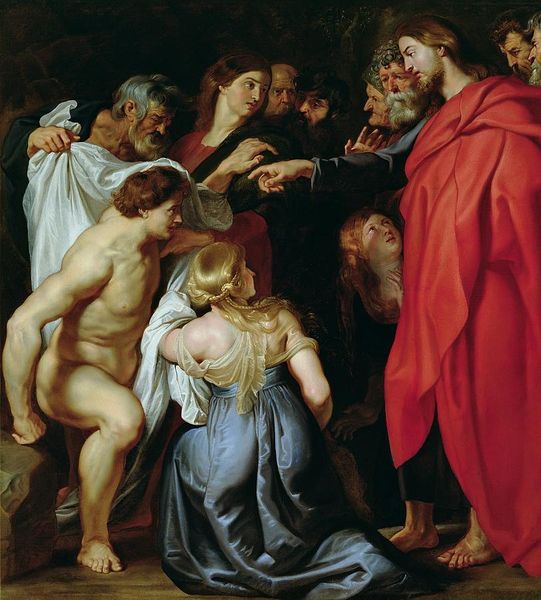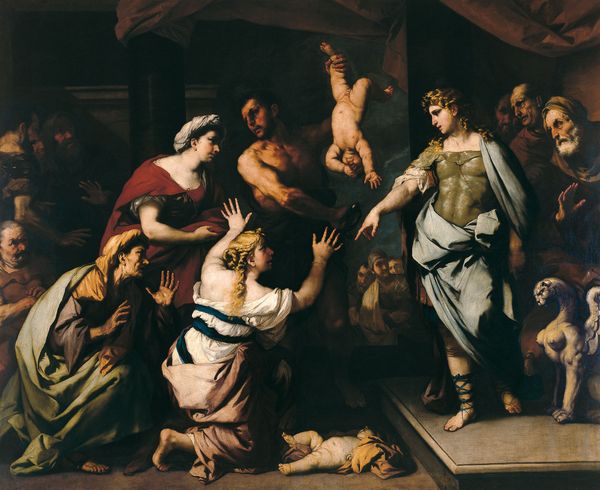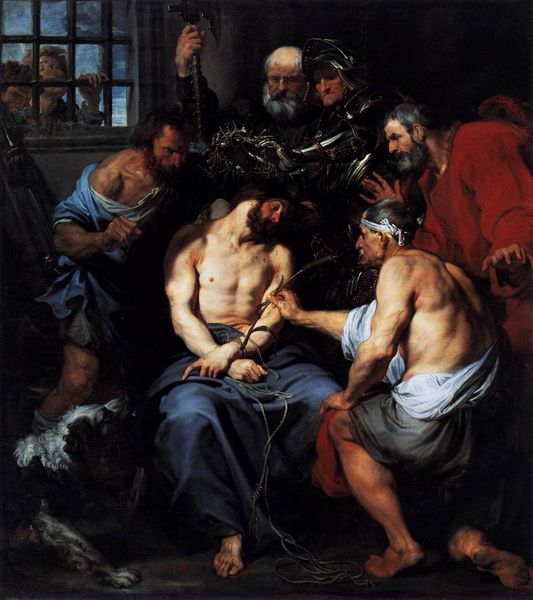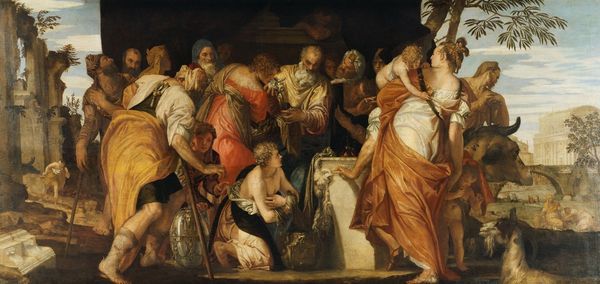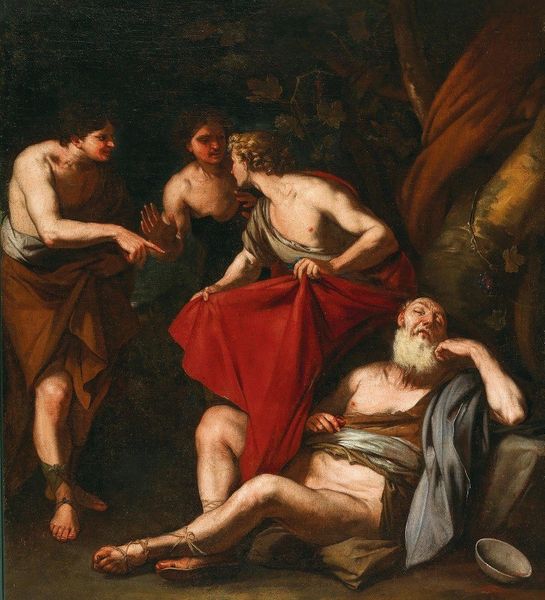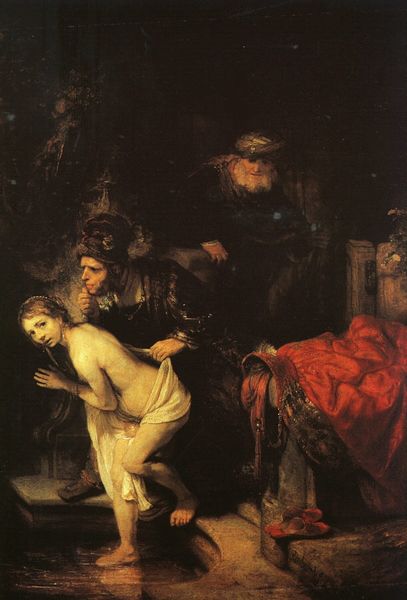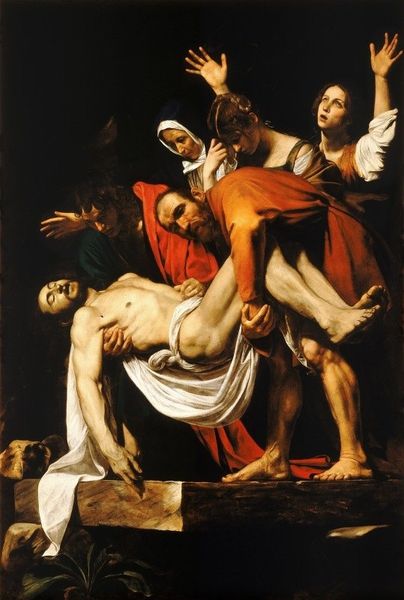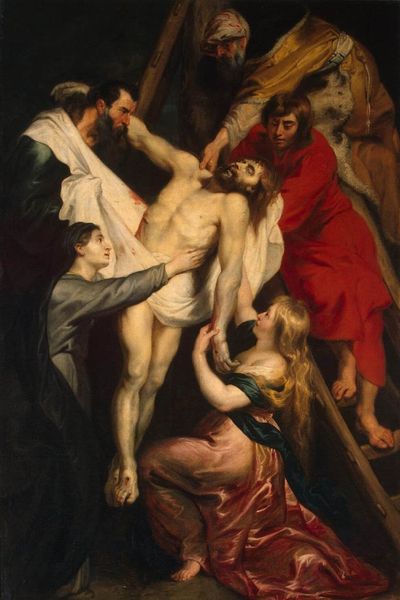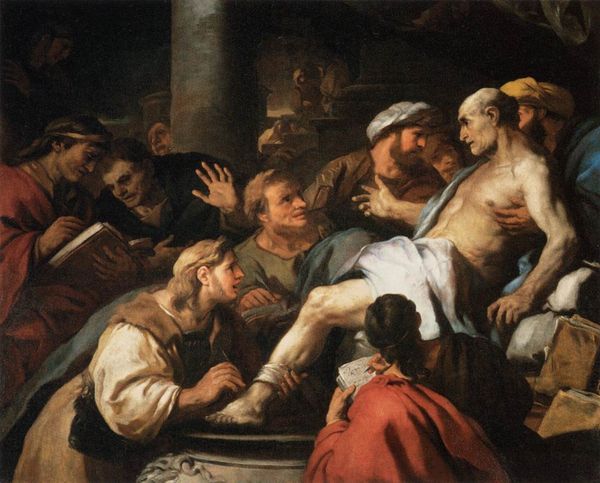
painting, oil-paint
#
narrative-art
#
baroque
#
painting
#
oil-paint
#
figuration
#
oil painting
#
flemish
#
mythology
#
history-painting
Copyright: Public domain
Curator: Let’s turn our attention to Peter Paul Rubens's dramatic oil painting, "Beheading of St. John the Baptist," created around 1610. Editor: Brutal. The first thing that hits you is the raw physicality and violence rendered in paint. The material of the oil itself, thick and glistening, seems to amplify the horror. Curator: Rubens masterfully situates this gruesome biblical narrative within a historical context of power and persecution. What commentary do you think he offers here on the societal mechanisms at play when religious figures threaten the established order? Editor: The executioner's hulking physique, his foot planted firmly on John’s body... It highlights labor as an exercise of dominance and raw power over flesh. And the cold steel of the executioner’s blade, juxtaposed with the opulent fabric of Salome's gown—such stark materiality is intentional, contrasting the act itself with its rewards. Curator: Salome, as depicted, is indeed fascinating. Do you think her seeming disinterest reveals an internal conflict, or is she presented as a purely manipulative figure, complicit in an act of injustice fueled by systemic patriarchal structures? Editor: Perhaps. But look at the fabrics and pigments: crimson reds, rich golds. These were expensive materials, produced through global trade networks often reliant on exploited labor. The image begs the question: at what cost does this luxury and supposed refinement come? And to whose exclusion? Curator: I find the rendering of John's lifeless form especially poignant. Consider how the executioner has quite literally made John subservient through corporeal force, while Salome benefits passively from the outcome. Editor: Indeed. The painting doesn't just depict a biblical scene; it interrogates the social and material conditions that allow such acts of violence and injustices to persist, framing this moment as inextricably linked to questions of production, labor, and consumption. Curator: I concur that the scene pushes us to reflect critically on such legacies within art, society, and even contemporary global economics. Thank you, it's been a chilling, if necessary, experience viewing this piece with you today. Editor: Thank you. By examining the raw materiality of "Beheading of St. John the Baptist", it encourages us to confront uncomfortable truths about our own social structures.
Comments
No comments
Be the first to comment and join the conversation on the ultimate creative platform.
